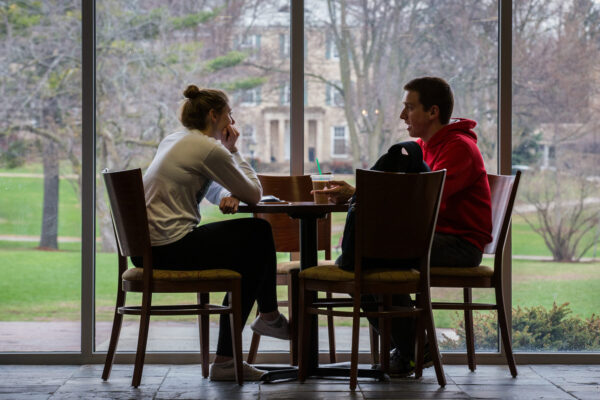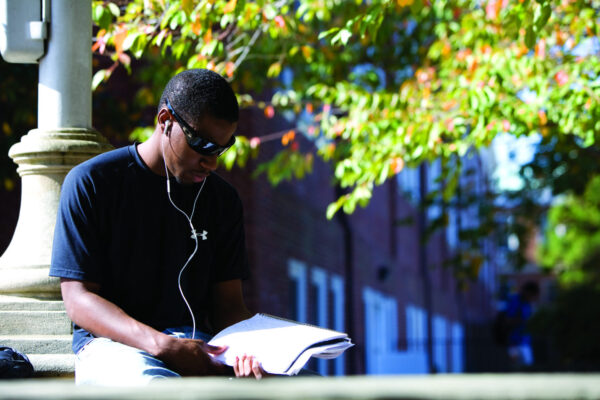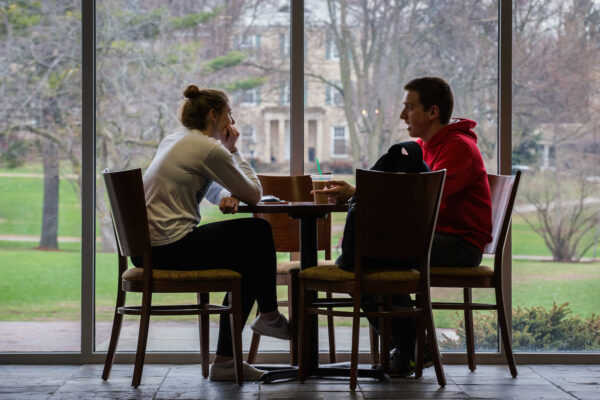Kelly Davis, director of peer advocacy at Mental Health America, looks at how college students are leading the way to change campus mental health.
This post is the latest in a series on college student mental health and well-being.
My third semester at American University (AU) in Washington, DC, was almost my last.
Like a growing number of students, I came to college with a long history of mental health struggles and treatment. Halfway through my second year, bouts of severe depression, substance abuse, and isolation meant I was missing classes and assignments and often struggled to get out of bed. I was told that the severity of my experience was too much for on-campus resources to help manage and was referred to professionals in the community. Newly diagnosed with bipolar disorder and urged to take a leave of absence, I began to think college was not for me.
Luckily, a combination of support from my family, access to services, disability accommodations, and access to self-help tools from other people with similar lived experience slowly transformed my life. I went from being on the verge of losing my financial aid to making the dean’s list, teaching group fitness classes, and working as a peer health educator for AU’s Wellness Center.
But I grew frustrated that the only difference between students who were not still enrolled in college and me was that I had access to the right information and resources at the right time. I became the president of a student mental health organization on campus and learned that my story was not unique at AU or at colleges across the United States.
In the two years following my graduation, I heard the same things from students around the country: we need help, there are not enough resources, and we need to be part of the solution. On the other side, many university leaders expressed a sincere desire to support students, a struggle to balance these concerns with other issues across campus, and uncertainty about how to sustainably address student well-being.
I decided to dedicate my professional focus to this issue and began working at Mental Health America and leading its peer advocacy work. With the understanding that student leadership and moving beyond traditional services would be key to addressing mental health on campus in a sustainable way, the Collegiate Mental Health Innovation Council (CMHIC) was born.
CMHIC is dedicated to highlighting and expanding student-led programs that fill gaps in traditional supports and services for mental health on campus. Beyond raising awareness of mental health conditions and growing the number of counseling centers, CMHIC looks for creativity from the student community to develop the comprehensive resources students want.
Launched in 2017, 15 members were chosen from different colleges and universities and met over a six-month period. Their ideas and advice for implementing these supports and services were released in a report this month, Beyond Awareness: Student-Led Innovation in Campus Mental Health. The report focuses on four major well-being solutions: college and universities must 1) creatively expand traditional services, 2) create peer support programs, 3) improve disability resources, and 4) use technology.
Creatively expand traditional resources.
Some of the model programs provide a new way for institutions to support students using traditional services.
Cody Semrau of Colgate University (NY) created BetterMynd, a virtual platform that allows college counseling centers to contract with counselors in the community. BetterMynd not only allows more students to access services, but also provides a virtual option that can break down time, transportation, or privacy barriers that could otherwise prevent students from seeking or staying engaged with services. It also helps to address concerns about lack of diversity among campus counselors by giving students opportunities to find professionals with whom they identify.
Another example comes from Kenna Chick at Georgetown University (DC), who worked with campus administrators to set up a $10,000 off-campus therapy fund. This fund supports students who need additional resources beyond what Georgetown’s counseling center can accommodate. It was designed to assist students whose concerns may be too severe to be treated by the counseling center, giving them financial support and allowing them to remain enrolled in classes.
Create peer support programs.
Students who are struggling often report isolation and a desire to connect with people like them. For those receiving mental health services, an hour a week in a professional’s office is often not enough. For those who cannot afford services or do not want to engage in formal therapy, there are few to no other options. To create a community that can keep students engaged and enrolled, peer support programs are essential.
Max Rothman and Sam Orley of the University of Michigan helped create the Wolverine Support Network, a student-run peer support program that provides weekly peer support groups with bi-weekly stress-busting events. The group has supported over 600 students and has had a significant impact on members’ well-being and college experiences. They have since created an umbrella nonprofit, The Support Network, to expand the model to additional universities.
CMHIC member Carter Kofman of the University of Wisconsin-Madison helped establish Live Free Madison, a program supporting college students in recovery from addictions. In addition to outreach and education, the program supports young people through community events and weekly recovery support meetings for students, family members, and LGBTQ students in recovery.
Member Priya Sridhar of the University of North Carolina at Chapel Hill launched the Mental Health Ambassadors. Among other initiatives, the group offers trainings to different student groups across campus to give members tools they can use to support their friends and themselves in areas such as stress management, suicide awareness, healthy relationships, and conflict management.
Whether it is community-building, support in sobriety or recovery, or sharing skills, colleges and universities that invest in student-led peer programs can help students more comprehensively, and even reach students who may not otherwise seek help.
Improve disability resources.
Many students with mental health conditions report not knowing if or when they qualify for disability accommodations. They often express fear and confusion about what is available to them, who will have access to their information, and what it means to identify as someone with a disability. To best engage students, students with disabilities can serve as navigators who can help engage their peers and walk them through the required processes.
Institutions also can support students to lead the way in creating more disability resources. CMHIC member Leah Goodman, who now has her clinical doctorate in occupational therapy, developed a two-credit course on well-being. The course explored the tools necessary for succeeding in higher education and what it means to identify as someone with a disability. Goodman created the program because she felt it could have helped her as an undergraduate student. Students of any experience can help create and facilitate similar programs with or without academic credit attached.
Use technology.
An obvious way to support students is to engage them using technology. As opposed to leaving the burden on students to go somewhere for help, a changing world means a changing way of approaching young people. In addition to the BetterMynd virtual counseling platform, there are other ways students may support their peers using technology.
Satvik Sethi of State University of New York at Binghamton created the Runaway App, a social entrepreneurial venture that uses an app, workshops, in-person events, and an app-based positivity zone to improve mental health and foster inclusivity and accessibility. The app connects students looking for support to anonymous, trained volunteers from around the world.
Other options include the Buddy Project, a Twitter-based resource started by Grabby Frost of Drexel University (PA), which has matched the more than 225,000 individuals from around the world to buddies looking for support from people with similar interests and experiences. Project Lighthouse is a peer-to-peer chatline that supports students in need led by Kenna Chick at Georgetown University.
There is hope.
While there are many challenges, the good news is that students are asking for help and taking action to help their communities. It is clear that what the vast majority of colleges and universities across the nation have been doing is not meeting student demands and needs. By engaging students in their own well-being, supporting their ideas, and spreading what is working across campuses, college and university leaders have the opportunity to keep students engaged, which sets them up for success on campus and throughout their lives.
For more information about the programs highlighted above and other initiatives, see the Mental Health America website.
If you have any questions or comments about this blog post, please contact us.


